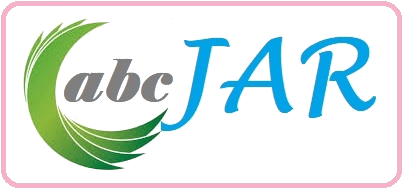Teaching a Second Language: How Multi-Lingual Collaboration and Munby’s ‘Needs and Needs Analysis’ Work
DOI:
https://doi.org/10.18034/abcjar.v8i2.90Keywords:
Teaching, Second Language, Multi-Lingual, Collaboration, Munby’s ‘Needs and Needs Analysis’Abstract
This paper deals with the teaching and learning process of English as a second language, especially in the context of Bangladesh where students in any academic institutions like colleges or universities are taught and instructed by teachers supposedly trained and skilled in teaching English as Foreign Language (EFL). It explores how an EFL teacher—using English as the primary mode of instruction—might deploy a methodological combination, where teacher transmission and student collaboration can be used as an effective method to teach this particular content-based subject to non-native English speakers. This methodological procedure is arguably influenced by the teacher’s EFL background having an undeniable effect on students’ input in the lesson, resulting in a syllabus which integrates students’ beliefs as well as experiences regarding the use of language in society and deploying a multilingual collaboration among the students in the lectures themselves. Such a version of traditional lecturing and student interaction, which is termed here as “collaborative dialogue”, has, to some degree, firstly succeeded in raising the general class level of comprehension and, secondly yet more significantly, lowering the general anxieties about interaction in class. Furthermore, it has also resulted in pooling student input about language use to create a rich, contrastive perspective on sociolinguistic topics.
Downloads
References
Appleyard, M., Fireman, Z., Glukhovsky, A., Jacob, H., Shreiver, R., Kadirkamanathan, S., & Swain, P. (2000). A randomized trial comparing wireless capsule endoscopy with push enteroscopy for the detection of small-bowel lesions. Gastroenterology, 119(6), 1431-1438.
Chambers, F. (1980). A reevaluation of needs analysis in ESP. ESP Journal, 1(1), 25-33.
Davies, A. (1981). Review of J L Munby: communicative syllabus design. TESOL Quarterly,
Deevey Jr, E. S., Gross, M. S., Hutchinson, G. E., & Kraybill, H. L. (1954). The natural C14 contents of materials from hard-water lakes. Proceedings of the National Academy of Sciences of the United States of America, 40(5), 285.
Dewey, C. F., Bussolari, S. R., Gimbrone, M. A., & Davies, P. F. (1981). The dynamic response of vascular endothelial cells to fluid shear stress. Journal of biomechanical engineering, 103(3), 177-185.
Edwards, N. (2000). Language for business: effective needs assessment, syllabus design and materials preparation in a practical ESP case study. English for Specific Purposes, 19(3), 291-296.
Fields, R. D. (2008). White matter in learning, cognition and psychiatric disorders. Trends in neurosciences, 31(7), 361-370. Foreign Language. Oxford: Pergamon Press.
Geertz, C. (1973). The interpretation of cultures (Vol. 5019). Basic books.
Green, R. T., & White, P. D. (1976). Methodological considerations in cross-national consumer research. Journal of international business studies, 7(2), 81-87.
Hall, A. J., & Brady, C. J. (1977). Assimilate source-sink relationships in Capsicum annuum L. II. Effects of fruiting and defloration on the photosynthetic capacity and senescence of the leaves. Functional Plant Biology, 4(5), 771-783.
Hawkey, R. (1979). “Syllabus content specification”, in British Council.
Holliday, A. R. (1994). Appropriate methodology and social context. Cambridge: Cambridge.
Holmes, W. E., Sliwkowski, M. X., Akita, R. W., Henzel, W. J., Lee, J., Park, J. W., & Shepard, H. M. (1992). Identification of heregulin, a specific activator of p185erbB2. Science, 256(5060), 1205-1210.
Holmes, W. E., Sliwkowski, M. X., Akita, R. W., Henzel, W. J., Lee, J., Park, J. W., ... & Shepard, H. M. (1992). Identification of heregulin, a specific activator of p185erbB2. Science, 256(5060), 1205-1210.
Hutchinson, J. D., & Simmonds, M. P. (1994). Organochlorine contamination in pinnipeds. In Reviews of environmental contamination and toxicology (pp. 123-167). Springer, New York, NY.
Hutchinson, T., & Waters, A. (1984). How communicative is ESP?, ELT Journal, Volume 38, Issue 2, Pages 108–113, https://doi.org/10.1093/elt/38.2.108
Hutchinson, T., & Waters, A. (1987). English for Specific Purposes: A Learner-Centered Approach. Cambridge: Cambridge University Press. http://dx.doi.org/10.1017/CBO9780511733031
Johnson, K. (1982). Communicative syllabus design and methodology. Oxford: Pergamon.
Johnson, P. (1982). The functional equivalence of imagery and movement. The Quarterly Journal of Experimental Psychology Section A, 34(3), 349-365.
Jürs-Munby, K. (2007). Hanswurst and Herr Ich: Subjection and abjection in Enlightenment censorship of the comic figure. New Theatre Quarterly, 23(2), 124-135.
Jürs-Munby, K. (2007). Hanswurst and Herr Ich: Subjection and abjection in Enlightenment censorship of the comic figure. New Theatre Quarterly, 23(2), 124-135.
Kaneko, T., Sato, S., Kotani, H., Tanaka, A., Asamizu, E., Nakamura, Y., & Kimura, T. (1996). Sequence analysis of the genome of the unicellular cyanobacterium Synechocystis sp. strain PCC6803. II. Sequence determination of the entire genome and assignment of potential protein-coding regions. DNA research, 3(3), 109-136.
Marx, K. (2000). Karl Marx: selected writings. Oxford University Press, USA.
Mead, C. A., & Truhlar, D. G. (1982). Conditions for the definition of a strictly diabatic electronic basis for molecular systems. The Journal of Chemical Physics, 77(12), 6090-6098.
Mead, R. (1982). Review of John Munby: communicative syllabus design. Applied Linguistics 3: 70-8.
Miller, P. B., & Weijer, C. (2003). Rehabilitating equipoise. Kennedy Institute of Ethics Journal, 13(2), 93-118.
Munby, J. (1978). Communicative syllabus design. Cambridge: Cambridge University Press.
Munby, J. (2002). Richard Beauchamp's funeral car. Journal of the British Archaeological Association, 155(1), 278-287.
Nunan, D. (1988). Syllabus design. Oxford University Press.
Nunan, D. (2012). Learner-centered English language education: The selected works of David Nunan. Routledge.
Nunan, L. M., Lightner, D. V., Oduori, M. A., & Gasparich, G. E. (2005). Spiroplasma penaei sp. nov., associated with mortalities in Penaeus vannamei, Pacific white shrimp. International journal of systematic and evolutionary microbiology, 55(6), 2317-2322. Press.
Richards Jack, C., & Rodgers, T. S. (2001). Approaches and Methods in Language Teaching. Cambridge UK.
Richterich, R. and Wilkins, D.A. (1975/80) Systems Developing in Adult Second Language Learning. Strasbourg: Council of Europe. Also Oxford: Pergamon Press.
Richterich, R. & J. L. Chancerel (1977/80) Identifying the Needs of Adults Learning a Foreign Language. Oxford: Pergamon Press.
Ross, R. (1975). The ‘white’ population of South Africa in the eighteenth century. Population Studies, 29(2), 217-230.
Swain, D. P., & Franklin, B. A. (2006). Comparison of cardio protective benefits of vigorous versus moderate intensity aerobic exercise. The American journal of cardiology, 97(1), 141-147.
Swales, J. (1980). ‘The educational environment and its relevance to ESP programme design’. In British Council (ed.) ELT documents special: Projects in materials design. London: The British Council. 61-70.
Tanaka, K. (1996). Inferotemporal cortex and object vision. Annual review of neuroscience, 19(1), 109-139. University Press.
Walters, B. B., Rönnbäck, P., Kovacs, J. M., Crona, B., Hussain, S. A., Badola, R., & Dahdouh-Guebas, F. (2008). Ethnobiology, Socio-economics and Management of Mangrove Forests: a Review. Aquatic Botany, 89(2), 220-236.
West, R. (1994). Needs analysis in language teaching. Language teaching, 27(1), 1-19.
White, R. V. (1988). The ELT Curriculum Design, Innovation and Management. Oxford: Basil Blackwell." Canadian Modern Language Review, 49(1), pp. 157–158
Widdowson, H. G. (1984). Explorations in Applied Linguistics 2. Oxford: Oxford University
Widdowson, H. G. (1989). Knowledge of language and ability for use. Applied linguistics, 10(2), 128-137.
Yanagimoto, T., & Yamamoto, E. (1979). Estimation of Safe Doses: Critical Review of the Hockey Stick Regression Method. Environmental Health Perspectives, 32, 193-199.
--0--
Downloads
Published
Issue
Section
License










